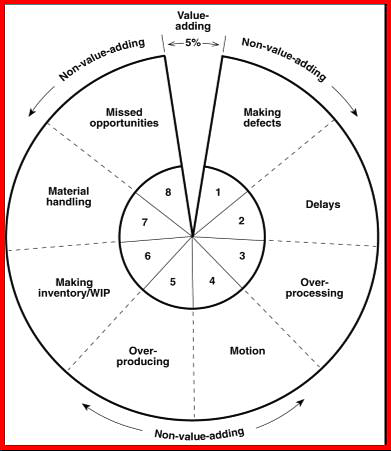Summer with its balmy evenings and long talks with good friends, lemonades in hand, is over. Let’s set the groundwork for this new season and get our definitions in place, once again—the difference between visual and lean.
What is lean?
Technically speaking, lean is a predetermined set of improvement tools that squeeze time and space out of the route that work (the product) follows as it moves through a company’s operational landscape and gains value.
Whether you call this route the critical path or the value stream, lean’s purpose is to identify and then eliminate barriers and constraints in that route. The shorthand for this is the “Seven Deadly Wastes,” which are defects, delays, overprocessing, motion, overproducing, excess inventory, and excess material handling—plus all the opportunities we miss because our resources are caught up in the wastes themselves.

Image 1: The Seven Deadly Wastes + 1
…
Add new comment